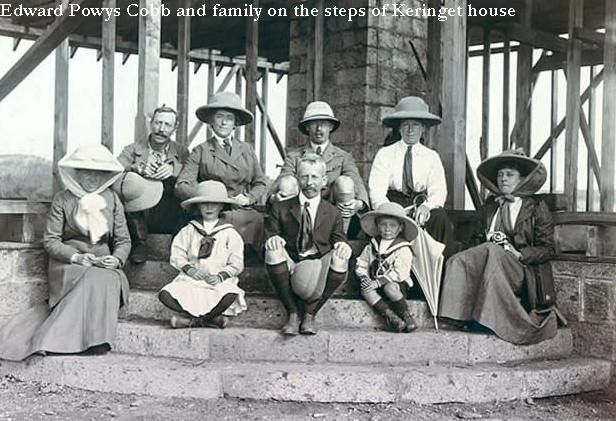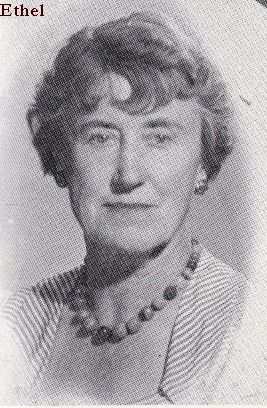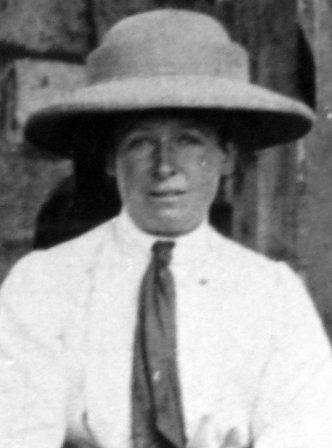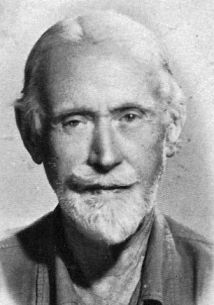Back to search results
Name: COBB, Edward Powys Wheatley




Birth Date: 19 Dec 1873 Nythfa, Brecon, S. Wales
Death Date: 27 Aug 1958 Amsterdam, Holland
First Date: 1907 Mar
Last Date: 1952
Profession: After SA war he settled in EA, farmed at Keringet, Molo, and was a Member of the Economic Commission. Stephen Ellis's ledger shows address - Powysland Estate July 1909. Mrs Powys-Cobb took an active and keen share in all his farming activities
Area: Mau Narok; Keringet, Molo; 1930 Elmenteita, Rongai
Married: 1. In Leamington 20.4.1898 Helen Louisa Harding b. 6 Aug 1871 Alveston, Warwick, d. 27 Dec 1946 Haddenham; 2. Ethel Margaret Dicksee b. 1888 Rugby, d. 1975 Isle of Man
Children: Dorothy (Vaughan); Thomas William Powys (7 Dec 1906 Brecknock-19 Oct 1984)
Book Reference: Gillett, SE, HBEA, Midday Sun, North, Nellie, KFA, Gethin, Sorrenson, Bovill, White Man, KAD, Red 25, Red 31, Hut, Playne, Drumkey, Land, Red 22, EA & Rhodesia, Pioneers, AJ, Gazette, Dominion, Nicholls, Naivasha, Leader14, Rift Valley, Red Book 1912
War Service: Royal Welsh Fusiliers 1891-8. Volunteered for service in SA war
School: Wellington College
General Information:
Stephen Ellis's ledger shows address - Powysland Estate July 1909.
Mrs Powys-Cobb took an active and keen share in all his farming activities
SE - Powys Cobb - Powysland Estate - July 1909
Midday Sun - 'rancher and farmer, one with bold, original and sometimes hare-brained ideas. Like Galbraith Cole, Powys Cobb had fought in the Boer War and subsequently travelled north to spy out the land, and had fallen for the rolling open downs interspersed with belts of cedar forest, the chilly dawns and windswept uplands of the country round Molo. This was too high for small-scale cultivation or for Masai cattle, and so was untouched by the mark of man. He had picked out an area of 30000 acres, named it Keringet after a river, and persuaded a friend to join him. John Hill-Williams with his wife and two small daughters went ahead in 1908, and Powys Cobb followed shortly afterwards at the head of a cavalcade consisting of his wife and two young children, a nanny and her husband, 4 bulls each of a different breed, 6 thoroughbred mares and a stallion, 2 bloodhounds .... 2 kittens and an assortment of ducks, geese, turkeys and hens, together with trunk-loads of clothes furniture, saddlery, tools and general possessions. At Mombasa they paused while railway wagons were fitted with screens to protect the livestock from tsetse flies en route. From Molo station they proceeded by ox-wagon and on foot to the site of their new home where, Mrs Cobb had been led to believe, a substantial house awaited them. She had even brought soft furnishings from Heal's with which to equip it. It was typical of her husband that the house existed only in his imagination. While in some ways a practical man, Powys Cobb was also a dreamer, and the germ of this adventure lay in a dream ............ the partnership with Hill-Williams did not last long ....... Until war came in 1914, a number of young Europeans were intermittently employed at Keringet ...... P-C saw Keringet as a training ground for pioneers, much as the floating school of his dreams was to train young seafarers. Pupils used to pay for their apprenticeship then, rather than the other way round. ......... Ned Powys Cobb had a passion for machines, the larger the better, and with great expense imported a pair of enormous steam engines which broke the flimsy bridges between Molo station and Keringet, and sank into the rivers. Once extricated, he stationed one on each side of the block of land he wished to plough and connected them by a cable and winch. A plough with 6 discs was then drawn to and fro between the engines. In theory, this greatly speeded up the cultivation, since a 2 furrow disc plough was the most that oxen could manage. In practice, the engines often broke down, an untrained labour force got the chain and winch hopelessly tangled up, and the engines, which were wood-burning, needed a labour force of their own to keep them supplied with logs. Once a year, the whole Cobb family migrated to the coast, where Ned could indulge his passion for the sea. He also started there a sisal plantation. A safari into Jubaland - then part of the British Protectorate, later ceded to Italy - persuaded him that cotton would thrive on the estuary of the Juba river. Only a large plantation would do, to be worked by the most up-to-date plant. So machinery of gargantuan proportions arrived from America at Kismayu, on the mouth of the river. Kismayu was a very minor port indeed, attuned only to dhows. Somehow the machinery was got ashore but there it quickly, and irretrievably, sank into the mud. Great big dredgers and other colossi lay about in attitudes of abandonment and despair for many years, and may lie there still for all I know.' .................. 'The family returned to England in 1915, Powys Cobb wishing to rejoin his regiment despite his age, 43. But he was found unfit for military service and went back to Molo, leaving his wife and children behind. They never rejoined him. All the pupils and managers had gone from Keringet, and help was badly needed. An acquaintance of the family heard about the situation and volunteered to fill the gap. She was young, intelligent and enterprising, the daughter of a successful architect and niece of a painter who became president of the Royal Academy. The moment Ethel Dicksee set eyes on Keringet she fell in love with it, and in due course its owner fell in love with her. After an interlude, she became the second Mrs Cobb. But Keringet did not long survive the many wartime difficulties such as the disruption of markets .... followed by the currency debacle of 1922, which increased the Cobb's overdraft by fifty per cent. This broke him, and his bank foreclosed. He and Ethel salvaged 37 heifers and, each riding one pony and leading another, drove them to the far end of the Mau escarpment, where a block of land called Mau Narok had not long since been released for white settlement. ..... Here Powys Cobb acquired another 30000 acres. How he managed this when a penniless bankrupt I cannot imagine, but he did. He and Ethel went back to tents and oxen and, bit by bit, on borrowed capital built up another enterprise and made another home. ........... The shipping of produce to distant markets was unreliable and expensive; Powys Cobb decided to build his own fleet. For a reason it is difficult to fathom, plans were made to lay the keel of the first vessel on the shores of Lake Naivasha, by rail nearly 400 miles from the Indian Ocean. How it was eventually to have reached the sea was never revealed. .............. The rains in 1930 were exceptionally heavy, and ruined 700 acres of the Cobb's barley which rotted on the ground. Prices were slumping and the rest was not worth harvesting. 'I'm afraid it means their selling the developed part of their farm and starting again on another bit,' Delamere wrote. 'Rather hard at Cobb's age to start all over again, and for her after making their home so nice. But it has happened to all pioneers in all the countries they have made. Their joy is in the creation of something out of nothing.' .......... (Elspeth Huxley's visit with Nellie and Cockie) ...'He was a smallish man with very pale eyes and a trim pointed beard like that of General Smuts whom he somewhat resembled.' .......... In 30 years he and Ethel between them with their African labour - I think Ethel was the real driving force - created a better, more productive, more successful enterprise than that at Molo, which had passed into the hands of an Italian family. ...... Ethel had no children. In his 80th year, in 1952, Powys Cobb sold most of his farm to the European Agricultural Settlement Board, ......... he kept back what he called 'a foothold' of 5000 acres for Ethel. ........ He bought a yacht, and he and Ethel cruised for several years among the Greek islands and around the Mediterranean. But he was no longer able to sail his own vessel, and a hired master was not the same. So he retired again, this time to a houseboat on a mere in Holland, where he died in 1959. . Ethel returned to her 5000 acres and built a church in memory of her husband. ...... She left Kenya in 1963 for the Isle of Man where she farmed 170 acres until she died in her 80th year in 1975.
Started farming in Mau Narok district in 1907, founder of Lumbwa Cooperative Creamery. Successful breeder of imported cattle, sheep & horses. For some years elected member of LegCo
Nellie - (1940) - Arts & Crafts Exhibition at Nakuru - 'when Powys Cobb brought down his wife's paintings to exhibit, he told the secretary he wouldn't allow them to be shown if 'native paintings' were included in the exhibition. Can you beat it - from an 'educated' man too? The secretary, after a great deal of trouble, persuaded him that it was all right.'
Gethin - 'It seemed Powys Cobb had been left a considerable sum of money by an uncle for the purpose of developing a British Colony, and after considering a number of projects he decided on BEA ..... Cobb was prepared to accept a few young lads who he considered suitable for colonial life, pay their passages to BEA and pay them practically nothing while they were learning farming. After some months when the pupil was considered to have become efficient as a farmer, Cobb would present him with a farm of some 600 acres. ........ Cobb had obtained from the EA Govt. about 6000 acres at Keringet, Molo, also another 3000 acres known as the 'promised land' on the Mau above Elmenteita, and a sisal plantation at Kilifi thrown in for good measure. A Company was formed including all the property allocated to Cobb, which was known as Powysland Ltd., with Cobb as Director, John Drury as adviser, and Hill-Williams as Manager. Some months later Cobb acquired from Frank Hobson a further 3000 acres at Loydien, on Lake Naivasha. ...... [Cobb] was a small man, very Welsh, and I [Gethin] should say pretty smart on a deal. Mrs Cobb was quite different, a big woman, easy-going, and who looked already fed up with BEA, but it may have been the heat of Mombasa.
Sorrenson - A Welshman, Powys Cobb, was offered a lease of 30,000 acres on the Mau plateau, on promising to use family trust funds to establish tenants on the land. ....... he was allowed to purchase two 6,000 acre farms in the Rift Valley, on top of the 30,000 acres promised to him on the Mau.
White Man - letter from Lord Delamere to Gwladys - April 22nd 1930 - '........ Lunched at the Avenue with the Cobbs and the Harpers. I am so sorry for the Cobbs. They have been hoping against hope that the rain would stop and let them harvest their crop, but now with the heavy rain of the last week or two the last 700 acres of beautiful barley has simply rotted on the ground. They harvested the rest, a good many thousand bags, and it is hardly worth taking to the station at the price. Mrs Cobb finally deserted her post the day before yesterday and came down to Nairobi to join him. I have never before seen her disheartened, but she says this has really been the last straw after working herself on the harvesters ever since you and I and the Neville Chamberlains went there together. I'm afraid it means their selling the developed part of their farm and starting again on another bit. Rather hard at Cobb's age to start all over again, and for her after making their house so nice. But it has happened to all the pioneers in all the countries they have made. Their joy is in the creation of something out of nothing. Cobb has already left one beautiful place, Keringet, into which he put years of his life, and now he is probably going to do it again, leaving a home made out of the bare veld for someone else. And he will probably do it again. New capital comes in and takes over in a different spirit, investing in proved things. Cobb has made large profits out of farming, but it has always gone back into increased acreages or something he is trying. The result is the first two or three bad years on end leave him stranded and he starts again. The pioneer mind only sees forward. If it didn't it would never do what it does. But it seldom consolidates for the same reason.
KAD 1922 - Elected Member of Legco for Coast
Red 25 - Member, Kenya Land Settlement Advisory Board
Hut - Bankrupt 1922 - sold to Count Vincenzini. His wife went to Isle of Man and built church.
Hut - Founder Lumbwa Co-operative Creamery; house boat
Playne - Keringet Farm - Keringet Farm, Powysland Estate, is 12 miles from Molo Station, and Messrs E.P. Cobb, J.H. Williams, and J.M. Drury have each an interest in it. They started farming 5,000 acres in January 1908 ........ Mr J.H. Williams who is now building his own house, has his wife and children with him, and all find the climate excellent. .......... Mr Drury came here in 1904 and took up this farm and went home, coming out later with Mr Cobb, who took up a farm of 35,000 acres. Mr Drury has the management of Keringet. On the coast there is a farm of 2,000 acres at Kilipi [sic], some 6 hours sail north of Mombasa, where there is a good harbour. .
Drumkey 1909 - Cattle Brand - V1O - c/o J.M. Drury, Molo
Land - E.P. Cobb leased 30447 acres at Mau
EA & Rhodesia - 11/9/58 - Mr Edward Powys-Cobb, who has died in Amsterdam at the age of 84, was commissioned in the Royal Welch Fusiliers after leaving Wellington College and served with the regiment in India and the South African War. He went to Kenya in 1907, taking up a large area of land at Elmenteita, and he was one of the earliest settlers to import pure-bred cattle, sheep, and horses and to experiment with mechanization. He was a founder of Lumbwa Co-operative Creamery, Kenya's first co-operative enterprise. He also farmed at Mau Narok. A strong individualist, with a keen interest in public affairs, he was an active supporter of Lord Delamere and his policies, though sometimes more critical on points of detail than was then considered good form in Kenya. He was elected to the Legislative Council for the Coast constituency in 1921, served until 1924, and withdrew to his farm for 5 years, and was then elected for the Rift Valley.
Red 22 - Vice-Chairman, Convention of Associations Pioneers - Naivasha - You cannot be a pioneer farmer without being an optimist, and optimism sometimes got out of hand. Powys Cobb took up land at a high altitude on top of the Mau Escarpment to grow wheat in a big way. He imported huge steam tractors, and had barges built to carry the harvested crops across the lake to the railhead at Naivasha. He had a deep ditch dug to keep out game. But when the wheat was planted, the land proved quite unsuitable. I heard that Crowned Cranes arrived in thousands to follow the planters and eat the seeds, finally breaking him financially.
Pioneers - Molo & Turi - The line came in 1900 and the first settlers soon after. One of the earliest was E. Powys Cobb who, in about 1905, took up a wide stretch of land called Keringet. These rolling open downlands seemed made for wheat but ploughing with teams of oxen and a single furrow plough scarcely scratched the surface, and oxen fared badly in the cold. Tractors lay in the future. However steam engines were in fashion. Powys Cobb imported two, and placed one at each end of the furrow. With a chain and winch, the engines hauled a plough to and fro between them. Powys Cobb also imported reapers-and-binders, and a threshing machine. …… In 1910 Powys Cobb imported an Arab stallion, Talisman, who became a famous sire. Among his progeny were several outstanding winners (Tamash, Tally-Ho) and he got his last foal, Talc, a notable winner belonging to D.H. Pell-Smith, when he was 34 years old. ……………… The Molo Hunt started in 1922, with hounds from the Masara Hunt, which came to an end in that year. Hunting existed at Molo, however, many years earlier. Powys Cobb's hounds hunted the district for some seasons before and during the First World War. This pack consisted of half-bred bloodhounds, and their huntsman was Gerry Alexander, who was Master and Huntsman of the Molo Hunt from its start until 1944.
Agricultural Journal 1908 - Brands allotted and registered - E. Powys Cobb, c/o J.M. Drury, Molo - Naivasha V??
Gazette - 7/4/15 - Liable for Jury service, Molo - E.P. Cobb (British) Farm Manager
Dominion - 1930 - European Elected member of Legco
Nicholls - a man driven by a fierce inner impulse always to be doing something new, he had already had to sell his beautiful farm Keringet, and in 1930 was forced to sell the second farm he had created from nothing. In the past Cobb had made large profits from farming but he always ploughed it back, as did almost all the farmers. Then 2 or 3 bad years left him with nothing and he had to start all over again.
Naivasha - Powys Cobb was granted land South of the lake, plus some thousands of acres at Mau Narok. He developed the latter himself, putting in a manager at Loydien. The idea was to grow grain in a big way. Huge steam tractors were imported and barges built to carry the harvested crop across the lake to the railhead at Naivasha. A deep ditch was dug to keep out game but the land proved quite unsuitable, and I have heard that Crowned Cranes arrived in thousands to follow the planter and eating the seed, and finally breaking him financially.
Rift Valley - Member of the Rift Valley Sports Club - Jan 1929 - Elected - 1909 - E. Powys Cobb
Red Book 1912 - E.P. Cobb - Naivasha
Obituary - East Africa and Rhodesia 11 Sept 1958 p.43
Gazette - 3/12/1919 - Register of Voters - Rift Valley Area - E. Powys Cobb - Farmer - Molo
Travel - April 2014 - Juliet Barnes - Plaque in Mau Narok church - "In remembrance of a beloved companion and husband, Edward Powys Cobb, who died in Amsterdam 27th August 1957. This church has been built by his wife Ethel Margaret, and consecrated on 26th February 1961.
Gazette 18 Apr 1961 probate
John Aglionby (great-grandson): Powys Cobb arrived with his family — my great-grandmother Helen and their children, my grandmother Dorothy and her younger brother Tom — in 1909, two years after he first visited and fell in love with the country’s western highlands. They settled in a place he named Keringet after a nearby river, having obtained a lease on several thousand acres from the government. Like many colonial settlers, Powys Cobb had what Kenyans today would call his “side hustles”. These included a sisal estate on the coast in Kilifi, an ostrich farm near Naivasha — halfway between Nairobi and Keringet — and an electric company in Mombasa, the main coastal city. He amalgamated all these enterprises into a company called Powysland.
Powys Cobb’s architectural, and other, adventures stumbled in 1920, by which time his wife and children had returned to England. The currency was revalued and my great-grandfather was unable to repay his loans. So his Powysland assets, including the Keringet and Kilifi properties, were confiscated. He landed on his feet however because the 30,000 acres he had originally applied for, around what is now Mau Narok and 30 miles south-east of Keringet, became available at this time. My grandmother wrote: “He moved over with three horses, 47 dairy cattle, and a few teams of oxen. He took out a mortgage on the property and lived in tents for two and a half years, the dairy cattle and the machinery had priority with the buildings.” My great-grandparents divorced in 1927 and the following year Powys Cobb married Ethel Dicksee, who had gone out to Keringet in 1916 to replace a male worker who had resigned to join Britain’s wartime army. Peter Kuria, an 83-year-old resident of Mau Narok who knew both of them, describes her as a “strong lady”. “She wore the trousers in the relationship.”
Back to search results




